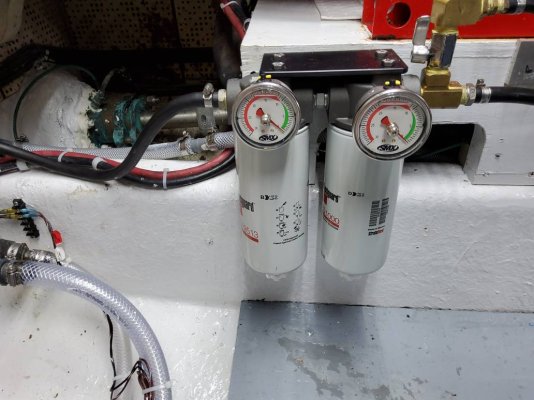Lostsailor13
Senior Member
Thinking of installing a setup on my Willard,from the forums experience what is the scoop,I read their website and from facts stated I am pretty sure I should already have it Installed,I bought the boat with 250 gallons of fuel from who knows when and had her out twice In some real sloppy weather and know it stirred up some sediment but nothing crazy,changed 2010 racor 2 micron after both rough days and they were dirty,previous owner had portable 120v fuel polishing system and said the fuel had been polished a few times,either way it has not been a problem yet,but still like whst I read about gulf coast setup,just couldn't find pricing,anybody have a ball park price for single setup solo,no extra pump,maybe just a few extra filters,then maybe try to roll my own filters,any input would be appreciated






